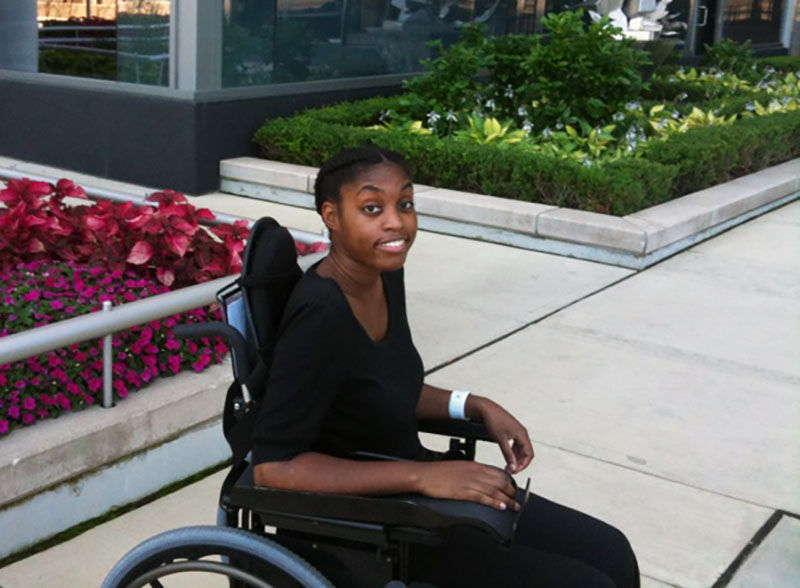A stroke at age 30 sparks questions about family's health history

Monifa Thomas-Nguyen was getting ready for work when she felt fatigued, her right arm and leg going limp – until she collapsed.
"I tried to get up to get my phone, but couldn't move and passed out," she said.
When Thomas-Nguyen didn't arrive at work that July 2011 morning, her colleagues tried to contact her. Word eventually made its way through a mutual friend to Allana Jackson, who immediately left work and knocked on Thomas-Nguyen's door.
"Anyone who knows Monifa knows there's no way she would just not show up to work," Jackson said.
From behind the thick metal door, Jackson could hear her childhood friend moaning. So she called the police.
A police officer and paramedic soon arrived and convinced a building supervisor to open the door. They found her on the floor, awake but acting strange.
Just 30 years old, Thomas-Nguyen was having a stroke.
"I wasn't thinking 'stroke,'" Jackson said. "I didn't know what to think because I couldn't make sense of it. She just seemed weak, like a bad virus."
Thomas-Nguyen is among 1 in 5 women who will have a stroke. That's why the American Heart Association is encouraging women during American Stroke Month in May to know their risks and take action to reduce them. Up to 80% of strokes might be prevented by making lifestyle changes and controlling risk factors, especially high blood pressure.
Stroke is a medical emergency in which every minute counts. The acronym F.A.S.T. is a simple way to remember the signs of stroke and how to respond quickly: Face drooping, Arm weakness, Speech difficulty, Time to call 911.
At the hospital, Jackson noticed Thomas-Nguyen struggled to answer simple questions.
"They'd ask for her Social Security number and she'd just say letters," Jackson said. "She'd look at me like, 'Why don't they understand what I'm saying?'"
Testing showed Thomas-Nguyen had an ischemic stroke, the most common type, which is caused by a blood clot that blocks blood flow in the brain.
Thomas-Nguyen didn't get to the hospital fast enough to safely get the clot-busting medication called alteplase or tPA. She was closely monitored the next several days as her right side continued to lack sensation and she struggled with speech.
"I knew what I wanted to say, but it just didn't come out that way," she said.

Thomas-Nguyen spent three months at a rehabilitation center and walked using a cane once released. She temporarily moved back home with her parents in Atlanta as she recovered.
Struggling to read, Thomas-Nguyen started with picture books as her brain healed. Nine months post-stroke, she celebrated a major milestone by reading "Get Shorty" by Elmore Leonard.
"It was the first time I could read a book and comprehend it," she said.
Two years later, she returned to work. And six months after that, she felt ready to drive.
Now 39, Thomas-Nguyen, who lives near Dallas, still struggles with aphasia and uses email or instant messaging when possible as a communications professional.
"I can count on my email being fluid, and it doesn't make me sound like I'm struggling," she said. "I'm an articulate person. But when I talk, I don't always sound that way because I have difficulty getting words out."
She also has an uneven gait and what she calls a "clumsy arm."
"Still, I'm grateful for everything I am able to do, as I know that none of that was a given," Thomas-Nguyen said.
Doctors aren't sure why Thomas-Nguyen had a stroke. But they said her family's health history could be a factor. Her mom had a stroke eight years earlier and her grandmother died of an aneurysm. Her mom has since had two more strokes that left her cognitively impaired. She also learned her family has a history of diabetes.
Thomas-Nguyen encourages others to understand their family's health history and risks.
"Knowing something doesn't necessarily mean you can prevent something from happening," she said. "But it should make someone very vigilant about checking with their doctors to see if there are any changes they can make to minimize their risk."





